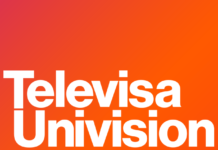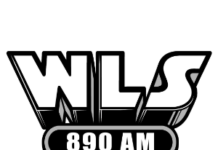
(By Radio Ink Chairman Eric Rhoads) Watching the Radio Show over the past decades has been interesting, because most years there is a hot topic that is going to “change the face of radio.” We’ve been through it all, from citizens band radio to CDs, cell phones, the digital dash, Internet radio, iTunes, Spotify, and other threats to radio listening. The hot topics at this year’s show will be listening on smart speaker devices like Amazon Alexa and Google Home, and the related topic of podcasting.
Predictions of radio’s death have happened over decades — in fact, I’ve made a few myself. Radio has watched the threats come and go, and most anyone you speak to who’s seen it happen will roll their eyes and say confidently, “Bring it on. Radio was strong before, is strong today, and always will be strong.” Is this what you believe?
Frankly, what you and I believe isn’t terribly relevant.
Just last week I met with the owners of a small local agency who handle a couple of dozen local businesses in my town. They, as it turns out, would never recommend or even consider radio — or any other media that is not fully digital. They are placing their client dollars on social media and search, with emphasis on Facebook, Instagram, and Google. Radio’s not at the bottom of the list — it’s not on the list. And when I asked about radio and told them what I knew, it was immediately dismissed.
As a member of a mastermind group that is mostly made up of marketers from tech companies, I know there has been a lot of discussion about moving back to old media like direct mail. The reason for that is that it’s more and more difficult to be competitive on price, so they are considering it at the urging of the group’s leader, a former direct mail maven who is seeing evidence of terrific results.
And still it’s discounted as irrelevant because the cost is so much higher than digital and it’s difficult to track direct mail at all, much less get instant results. I just went through this in my own company, when we dropped $30,000 on a mailing whose results could not be tracked.
The battle you and I face in radio is not whether we have listeners or whether we can show results. We can prove both. The problem is that, as I predicted on this page decades ago, digital natives in control of media won’t believe radio works — even if the evidence is solid. They don’t want to believe it, because it’s not digital and they can’t look at the metrics and see results as the spots air. And though there are even creative ways to address that, radio simply isn’t digital in their eyes.
So how do we overcome this issue? A case study alone isn’t the answer. We need a digital Moses to part the sea and tell everyone how this old media is new again, and how they are using it to boost search results and lower search costs in combination with radio. We need someone to show how they made their digital campaigns more effective.
To do that, you need someone like Ryan Deiss, Gary Vaynerchuk, Russell Brunson, Noah Kagan, Anne Handley, or Todd Brown to say radio is cool and show how they use it to enhance their campaigns.
I’m not here to predict radio’s future, but as I’ve said in the past, if the money does not follow radio, we have a problem. And the money, like it or not, is being controlled more and more by digital natives, both at local and national agency levels and in local direct.
The radio CEO who ultimately wins, and keeps their airwaves and dollars flowing over the next decade and beyond, will be the one who visits these icons, and works with them on tests to enhance their offerings and prove radio’s relevance in a digital world. It will take time, multiple meetings, a lot of frustration, and in many cases, learning how to speak digital. But the investment will be worth the time.
The other giant opportunity we’re missing has to do with Amazon’s effect on retail. Amazon is crushing many retailers, whose biggest problem is people going into the store, touching and inspecting an item, then having it delivered to their door — by Amazon. I did that just this week and saved money. Radio CEOs (not just their captains) need to be seen listening (not speaking) at the National Retail Federation convention, becoming part of the dialogue and helping retailers solve this problem. Even in a good economy, we’re seeing more empty storefronts. It is a giant problem, and a collaborative effort with radio might help these retailers survive.
In the case of the digital marketers, they don’t need you — but if you can make them more money by lowering their cost per click, they will shout your praises from the digital rooftop. Retailers are so consumed with their problems that they are not looking to things of the past, but if you can become part of the dialogue, and not just sell, but provide viable solutions, you could get credit for saving their industry.
It’s time for radio to have strategic discussions and stop worrying about the next “radio killer.” If we don’t start getting outside of our comfort zone and understanding the real world around us, the next radio killer is in the mirror.
Eric Rhoads is Chairman of Radio Ink Magazine and can be reached at [email protected]






i travel between Austin, Texas and California on a regular basis. i force myself to listen to terrestrial radio. I often pick up a small market signal that obviously is plugged into a satellite feed. In 30 minutes the station never identifies what town it’s in. There was no local elements at all. THIS is what’s killing radio. Thinking you can ignore your audience and your advertisers is the recipe for instant death. Radio is doing it to itself. Look at any stations website and there is no content referring to advertisers. Go ahead, keep doing business this way and you’re going to die.
Nowdays radio rly powerful
Voices tell people where to go. Radio is the ultimate voice. As long as radio speaks in clear, appealing and connected manner….We Win! Thank you, Eric.
I too run a small agency. I’d love to have a way to use radio effectively for my clients. I spent a lifetime in radio, and I know from experience that it works, when done right, for both branding and direct response. And I know there are a few radio groups, and a few local broadcasters, whom I trust to execute correctly and honestly. But the measurement we have isn’t credible, the content is often stale, the environment in which spots run is unfavorable, sellers are often poorly trained, and schedule execution is generally poor.
Where to start? Rebuild audiences with stronger content, and rebuild trust and credibility with much better measurement. And media companies are going to have to step up pay for that. All I see is lip service.
If 2.45 Ghz microwaves can penetrate into foods.
Then what do you think The 28 GHz spectrum band would do to the Planet ?.
The FCC (FRICKING CRONY CAPITALIST)
have KILLED the planet already.
They know NOTHING ABOUT RADIO (RADIATION) WAVES… AND they have zero “LEGAL” AUTHORITY
to make rules and regulations that they have been doing since they took over the “REAL” authority.
The FCC are “CRIMINALS” and need to be STOPPED
AS SOON AS POSSIBLE if you want to save the world.
https://telecom.economictimes.indiatimes.com/news/dot-to-ask-trai-about-suitability-of-28-ghz-band-for-5g-services/66079886
Eric, actually direct mail is very trackable. I have major car dealers who use direct mail regularly, and we do “match reports” … we run the dealer sales data against the mailing list, and they find that information helpful. Also, (obviously) people bring in the mailers. In terms of radio, many dealer GM’s flat out will not look at radio, pointing to the 8 to 10 minute commercial cluster breaks … the common practice of most FM’s now. And sadly, radio owners and top managers seem tone deaf to this problem of cluster breaks… breaks that drive listeners away, and hurt advertising effectiveness for those clients buried in the middle of these cluster breaks.
Exactly. When used properly, direct mail is tremendously trackable… and effective. Radio is often ambiguous at best…. especially in small unrated markets.
When a customer walks through the front door holding the mailer, you know exactly how they got there. And let’s not forget that advertising works best when we realize that it typically cannot sell a product for a business… but it can get someone through thedoor and create the opportunity to make a sale.
First of all, an 8 to 10-minute commercial cluster is too long. It is easy to understand how an ad client feels lost inside such a big or long break.
The elusive trick has always been to attract attention, whether it’s music, talk or whatever, while keeping listeners engaged enough to stay on frequency and stay with you.